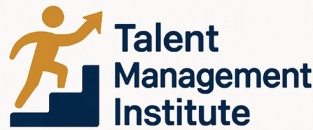
Understanding Skill Utilization in the Workplace
Grasping the Essence of Skill Usage
Skill utilization in the workplace is an integral element that influences not only productivity but also employee satisfaction. At its core, skill utilization refers to how effectively an organization leverages the abilities of its employees to meet business objectives and foster a conducive work environment. Understanding this concept lays the groundwork for successful talent management. In today's dynamic work settings, organizations must ensure that their employees feel engaged and motivated. This is often achieved by appropriately utilizing their skills across various projects and tasks, enabling them to contribute meaningfully to team efforts. When team members are equipped with the opportunities to fully exploit their potential, it leads to enhanced job satisfaction and organizational success. Many professionals encounter situations where their skills are either underutilized or overutilized. Both scenarios are suboptimal and can negatively affect an individual's engagement and output. Adequate resource allocation and optimization of skill utilization are vital to strike the right balance, allowing employees to thrive in their roles while advancing the organization's mission. Employers are encouraged to engage in consistent evaluation of their talent management strategies to effectively identify any skill underutilization within their teams. By recognizing where skills are not being effectively harnessed, management can refine their approach, ensuring that all resources, including human talent, are maximized to their fullest capacity.Identifying Underutilized Skills
Recognizing Untapped Skill Sets
In any organization, the recognition of underutilized skills among employees is crucial for unlocking their full potential and optimizing overall performance. Employees feel valued when they can contribute with their complete range of abilities and knowledge within the team. Identifying these hidden talents not only boosts job satisfaction but also enhances resource management and project management efficiency.
However, underutilized skills remain a challenge as organizations often focus on immediate task completion without considering the employees' complete skill set. Underutilized employees can experience diminished engagement, leading to reduced productivity and creativity. A thorough assessment of existing resources and capabilities can highlight areas where team members might provide additional value.
Methods for Identifying Underutilized Competencies
- Employee Assessments: Conduct regular assessments and feedback sessions. This will help gather comprehensive insights into the skills that employees possess but may not regularly apply in their current roles.
- Skill Audits: Implement skill audits to evaluate the current utilization of professional capabilities. This helps in identifying where there is room for more productive resource allocation.
- Task Analysis: Analyze task assignments and projects to discover surpluses in skill capacity and potential underutilization resources. This may consist of comparing tasks employees are currently doing against their proven skills and experience.
By identifying underutilized skills, organizations can effectively assign tasks that not only match an employee's current capabilities but also challenge their growth potential. As a result, this strategic deployment of skills leads to improved resource utilization and better outcomes.
Engaging management professionals in this identification process helps in developing a more lean and efficient work environment. It fosters an organizational culture that encourages employee engagement, self-improvement, and continuous development.
Consequences of Overutilizing Skills
The Pitfalls of Overutilizing Skills
Overutilizing skills within a team can often be just as detrimental as allowing skills to be underutilized. In the fast-paced environment of modern workplaces, the pressure to maximize output often leads to pushing employees' skills beyond their limits. While initially this might seem beneficial, it can result in several challenges that affect both the employee and the organization. When employees are stretched too thin across tasks, their capacity to perform at their full potential is compromised. This not only impacts the quality of work but also leads to resource management issues. While resources are aimed to be allocated efficiently, overutilization can cause an imbalanced workflow, ultimately straining resources. ### Negative Impacts on Job Satisfaction Overutilized employees might start to feel overwhelmed. The constant demand can lead to stress, which erodes job satisfaction over time. When employees feel perpetually under pressure, it can reduce employee engagement and increase turnover rates, posing a challenge for talent management professionals. ### Resource Allocation Challenges When skills are overused, the imbalance in resource allocation is inevitable. Resource utilization strategies may falter, leading to burning out talent rather than nurturing it. Teams with members who are regularly overworked may see a dip in overall productivity and morale. ### Strain on Professional Development Shifting focus constantly from one task to another without proper support can hinder an employee's professional growth. Overutilized work environments don't afford employees the space needed to develop new skills or pursue further education that might benefit their roles. As a result, opportunities for upskilling and professional development are missed, creating stagnation. ### Real-Time Management Solutions Striking the right balance between skill utilization is crucial. Real-time feedback mechanisms can help in managing workloads more effectively. By constantly assessing how tasks are distributed, management can adjust resource allocation to ensure no employee is overburdened. This will help in maintaining a lean operation that maximizes both potential and satisfaction. For further strategies on managing talent effectively across remote teams, visiting this page can provide more insights on integrating learning and project management solutions.Strategies for Balancing Skill Utilization
Developing Strategies to Achieve Balanced Skill Utilization
Achieving the right balance in skill utilization is crucial for any organization's success. When skills are optimally harnessed, employees feel engaged and their full potential is realized, leading to higher productivity and job satisfaction. Here are several strategies that can help in balancing skill utilization effectively:- Comprehensive Skills Assessment: Conducting a thorough assessment of employee skills across the team is foundational. This involves identifying skills underutilized and understanding individual strengths and areas of growth. Once identified, roles and responsibilities can be realigned to maximize each employee's strengths.
- Flexible Resource Allocation: In project management and resource management, implementing flexible resource allocation systems is vital. Rotating employees across different tasks or projects helps in evenly distributing workload and utilizing diverse skills across the team. This not only prevents underutilized work but also mitigates burnout and employee disengagement.
- Regular Feedback Loops: Regularly engaging with team members through structured feedback sessions helps in aligning their job tasks with their skillset. Managers should maintain open communication channels to understand employee capacities and areas where they may feel underutilized. This proactive approach aids in timely adjustments and enhances resource utilization.
- Continuous Professional Development: Encouraging professional growth through training and upskilling opportunities can prevent skills from becoming outdated. Organizations need to invest time and resources in employee development to ensure every team member is equipped to take on diverse roles and projects, thereby reducing the risk of underutilization.
- Strategic Task Assignment: Assign tasks based on employee capabilities and project needs. This strategic alignment demands a lean approach to management where each individual's skills are aligned with the most relevant tasks. It ensures that underutilized skills are given a chance to shine, avoiding resource underutilization.













